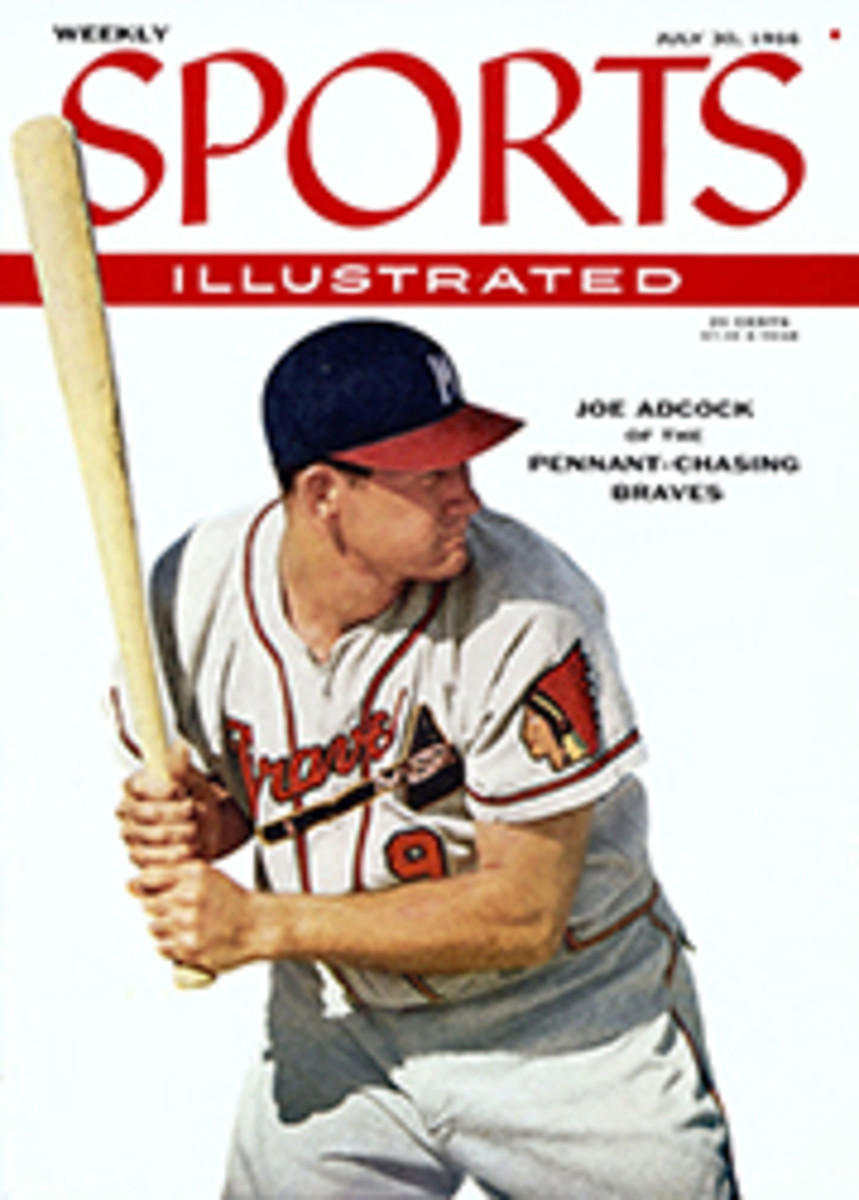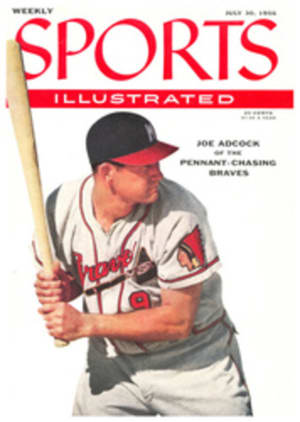
THE HONEST WRESTLER
Near Bethany, Mo. lies the grave of a man named Lorenzo D. Thompson, whose distinction was that he licked Lincoln at wrestling. But, like many "almost undefeated" champions, Lincoln had supporters who claimed that the one famous defeat wasn't really a defeat at all.
The disputed match with Thompson took place in 1832 at Beardstown, Ill. when Lincoln, then 23, was leading a company of men from Sangamon County, Ill. who had volunteered to fight the Indian, Black Hawk. Lincoln's men said no one in the Army could throw their Captain Abe, and they boasted with good reason. Although his tall, spindly body didn't look strong, he was six feet four inches and 180 pounds of sinewed power.
But Thompson, who, Lincoln said later, "could have thrown a grizzly bear," dared take up the challenge, and a championship match was arranged.
Carl Sandburg describes it in his epic biography, Abraham Lincoln, The Prairie Years: "Lincoln's friends bet money, hats, whiskey, knives, blankets and tomahawks. On the day of the match, as the two wrestlers tussled in their first feel-outs of each other, Lincoln turned to his friends and said, 'Boys, this is the most powerful man I ever had hold of.' For a while Lincoln held him off; then Thompson got the 'crotch hoist' on him, and he went under, fairly thrown. The match was for the best two out of three falls. In the second grapple, Lincoln went to the ground, pulling Thompson down with him. It looked like a 'dog-fall' [a draw]; Lincoln raised his head and said: 'Boys, give up your bets. If this man hasn't throwed me fairly, he could.' And his men paid their bets to the last dollar or jackknife...but still went on claiming it was a dog-fall wrestle...."
There was no disagreement, however, about an earlier famous match Lincoln fought with a local tough named Jack Armstrong. It was in the early 1830s, when Abe worked as a clerk in Denton Offut's store in New Salem, Ill.
A saloonkeeper, Bill Clary, bet Offut $10 that Abe couldn't throw Jack Armstrong, the Clary's Grove champion. People from 50 miles around came to Offut's to watch the match, and bets ran high. Armstrong was short, with powerful muscles, but Lincoln held him off with his long arms. Said Sandburg: "Lincoln lifted him up by the throat...shook him like a rag, and then slammed him to a hard fall." Armstrong acknowledged: "He's the best feller that ever broke into this settlement," and the fight was over.
From then on Lincoln often appeared in the role of sports arbiter during the six years he worked in New Salem. His reputation for fairness—and for having the strength to back up his decisions—made him a popular referee, and a local foot or horse race, cockfight or gander pull that he didn't preside over was rare.
When he wasn't refereeing or defending his wrestling and crowbar-throwing championships, Lincoln played a game that seems incongruous for a man of his size and strength—marbles. But like everything he attempted, he did it better than anyone else.
While Lincoln played marbles with the youngsters in the New Salem area, he also shone against men. In those days marbles were popular with all ages. The game was played on a square marked off on the ground with a stick. Lines were drawn diagonally across the square, connecting its corners, a small marble placed at each corner and a larger one (Old Boler) put at the spot in the center where the lines intersected. From the taw line, at a previously agreed-upon distance from the square, Lincoln could hit Old Boler with his taw (shooter) four times out of five.
The marbles used were irregular, homemade ones fashioned from rounds of clay and baked in the embers of a fireplace. Sometimes a bullet mold was used to shape the marbles; otherwise the clay was rolled between the hands.
Once, after he had become President and was burdened with worries about the Civil War, Lincoln found relaxation in a makeshift game of marbles. He was walking toward Army headquarters in Washington with a telegraph clerk and one of his sons. Picking up a smooth round stone from the street, he challenged them to a contest of shooting stones ahead, marble fashion, to see who could get his stone to the headquarters steps in the least number of shots. When they reached the steps, Lincoln had won and had found in a simple game a respite from Presidential pressures.
PHOTO
ILLUSTRATION
AFTER LINCOLN OUTWRESTLED ARMSTRONG, THE PRIDE OF CLARY'S GROVE, HE FACED THE HOSTILE BAND OF HIS OPPONENT'S SUPPORTERS UNTIL ARMSTRONG HIMSELF INTERVENED
PHOTO
EARLIEST LINCOLN photograph, in 1846, shows his enormous, powerful hands.

